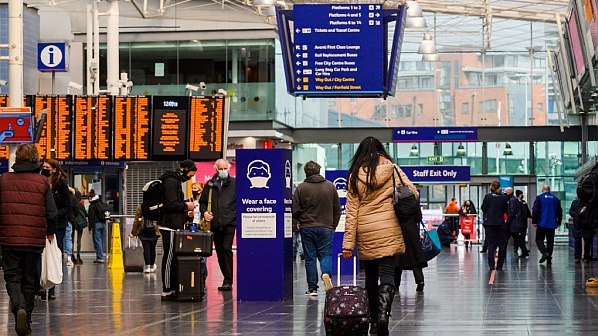THERE were 182 million passenger journeys made by rail in Britain during the first quarter of the 2021-22 financial year (April 1 to June 30) following the easing of restrictions imposed to stop the spread of Covid-19. Non-essential shops reopened on April 12 while indoor hospitality reopened in England from May 17.
The figures released by Britain’s regulator the Office of Rail and Road (ORR) on October 7 show that this was more than five times the 35 million journeys made during the same period in 2020-21. However, the ORR says during the same period in 2019-20 there were 437 million journeys undertaken.
Looked at in conjunction with Department for Transport statistics, the numbers indicate that passenger rail usage in Britain began the first quarter at around 30% of pre-pandemic levels before rising to 55% in early June.
In terms of passenger revenue, this was £999m, equating to 35.9% of the £2.8bn in reported in the first quarter of 2019-20, based on 2021-22 first quarter prices. Franchised passenger revenue per journey fell from £6.26 in 2019-20 Q1 to £5.45 in 2021-22 Q1. The ORR says this was due to a combination of a decrease in average journey length and an increase in the proportion of journeys made using off-peak tickets.
The London and South East sector, traditionally the busiest, recorded 127 million journeys in the first quarter of 2021-22. This equates to 42.2% of the 301 million journeys in the same quarter in 2019-20. The regional sector recorded 40 million journeys in the first quarter of 2021-22, giving it a relative usage of 41.2%. The Long Distance sector recorded 14 million journeys, equating to 39.3% of the 36 million journeys recorded in the first quarter of 2019-20.
France
The recovery is also progressing on the continent. In France, Mr Alain Krakovitch, CEO of SNCF Transilien, tweeted on October 5 that 60% of business travellers have returned to TGV services since the beginning of the French school year on September 1. “Companies need to reconnect with customers, the field, and 72% want to use the train for this,” he wrote. “This is a clear decision by French companies for eco-mobility.”
In Germany, 3.5 billion passengers used public transport in the first half of 2021. This is a reduction of 18% compared with the first half of 2020. However, the decline is in large part due to the Covid-19 restrictions and the introduction of lockdowns and restrictions.
In Spain, passenger numbers on the Madrid - Barcelona high-speed line were higher in August than during the same month in 2019, before the Covid-19 pandemic.
Renfe also recorded the highest number of weekend passengers since the start of the pandemic in mid-September when a total of 213,607 used Ave, Avlo and long-distance trains.

